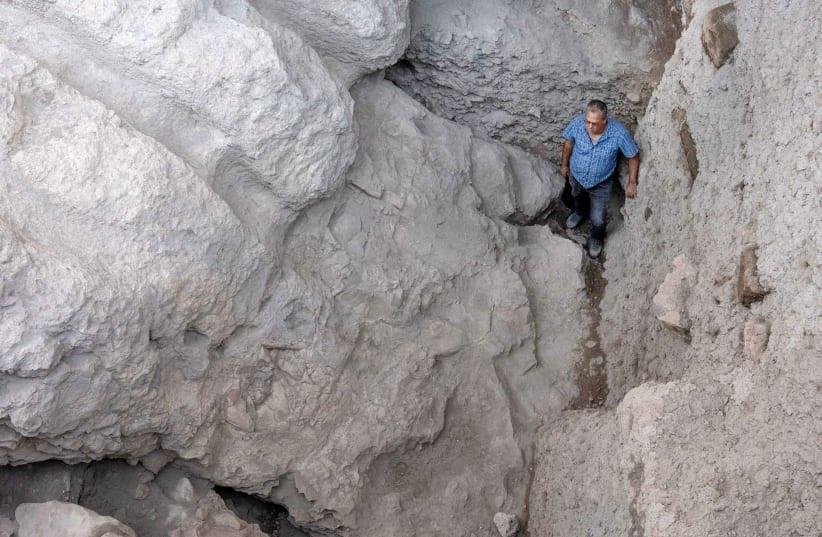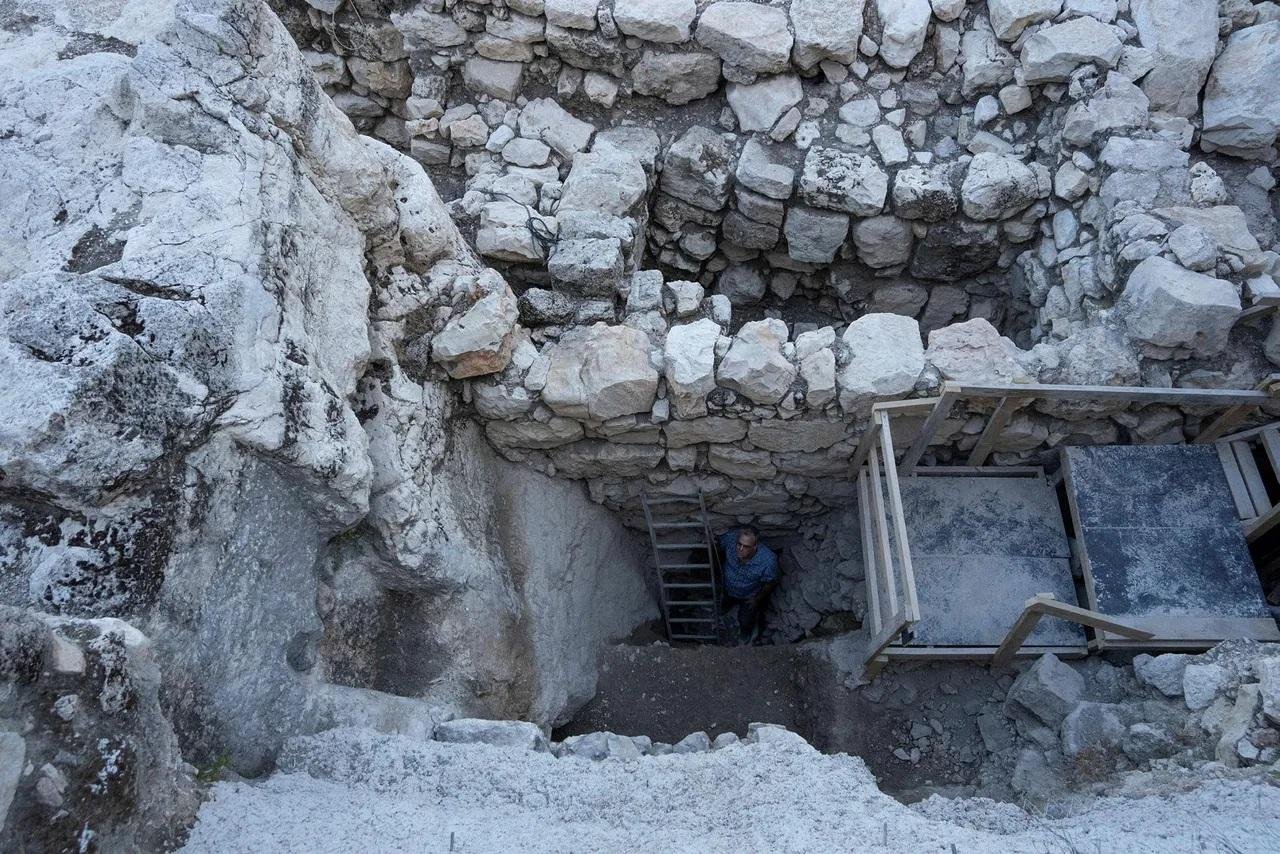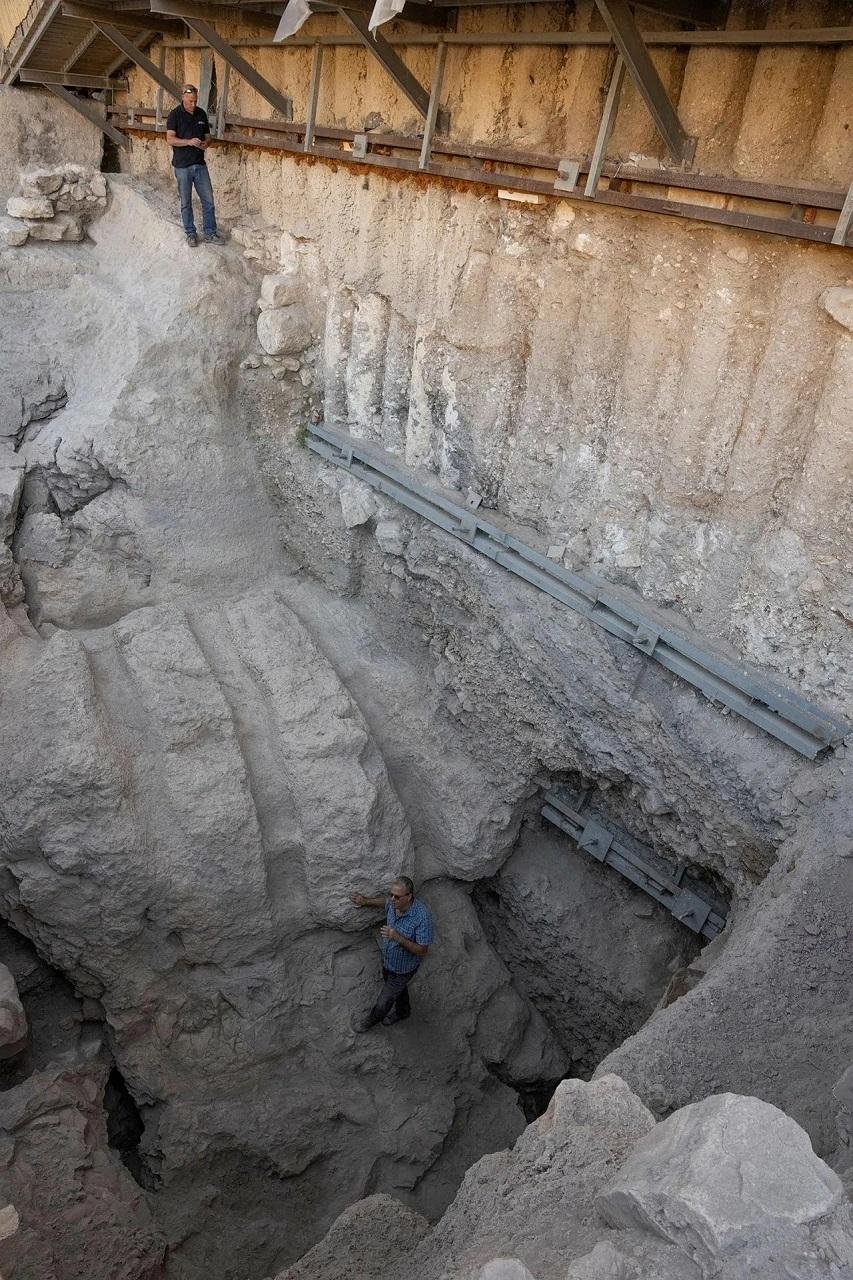Archaeologists have uncovered a monumental moat that once fortified the ancient city of Jerusalem. This significant find, located in the Givati Parking Lot within the Jerusalem Walls National Park, resolves a long-standing archaeological mystery.
 Prof. Yuval Gadot stands beside the northern side of the moat in Jerusalem, with carved bedrock channels nearby. Credit: Eric Marmur, City of David
Prof. Yuval Gadot stands beside the northern side of the moat in Jerusalem, with carved bedrock channels nearby. Credit: Eric Marmur, City of David
The mᴀssive moat, which is at least nine meters deep and 30 meters wide, separated the City of David from the Temple Mount. The moat was originally created to protect the city, particularly its northern flank, which was the only vulnerable point in the City of David’s defenses. The moat’s sheer size and the engineering skills required for its construction highlight the power and capabilities of Jerusalem’s ancient rulers.
“The creation of the moat was a large-scale, monumental operation, designed to change and modify the natural topography to demonstrate the power of Jerusalem’s rulers to those who entered its gates,” said Prof. Yuval Gadot of Tel Aviv University. The moat served as a formidable barrier, splitting the City of David into two distinct parts: the southern residential area and the upper city, which housed the palace and temple.
This discovery has led archaeologists to re-examine past excavation reports, particularly those by British archaeologist Kathleen Kenyon, who conducted excavations in the City of David during the 1960s. Prof. Gadot explained, “It became clear to us that Kenyon noticed the natural rock slopes towards the north in a place where it should have risen. She thought it was a natural valley, but now it turns out that she had uncovered the continuation of the moat, carved to the west.”
 Prof. Yuval Gadot at the bottom of the Jerusalem moat. Credit: Erik Marmor, City of David
Prof. Yuval Gadot at the bottom of the Jerusalem moat. Credit: Erik Marmor, City of David
The connection of these two sections creates a moat that extends at least 70 meters from west to east. This discovery aligns with biblical references to the city’s topography, such as the Ophel and the Millo. In the first Book of Kings (11:27), King Solomon is described as building the Millo and closing up the breach in the wall of the City of David.
While the exact date when the moat was cut remains inconclusive, evidence suggests significant construction and quarrying activities in Jerusalem date back to the Middle Bronze Age, around 3,800 years ago. “If the moat was cut during this period, then it was intended to protect the city from the north – the only weak point of the City of David slope,” explained Dr. Yiftah Shalev of the IAA. “Either way, we are confident that it was used at the time of the First Temple and the Kingdom of Judah (9th century BCE), so it created a clear buffer between the residential city in the south and the upper city in the north.”
 Into the moat: Yiftach Shalev top left, Yuval Gadot bottom middle. Credit: Erik Marmor, City of David
Into the moat: Yiftach Shalev top left, Yuval Gadot bottom middle. Credit: Erik Marmor, City of David
The discovery of the moat also underscores the impressive engineering capabilities of ancient Jerusalem’s inhabitants. Eli Escusido, director of the Israel Antiquities Authority, said: “When you stand at the bottom of this giant excavation, surrounded by enormous hewn walls, it is impossible not to be filled with wonder and appreciation for those ancient people who, about 3,800 years ago, literally moved mountains and hills.”
The findings from this excavation will be presented at the City of David’s “Jerusalem Studies Experience” conference in August.





